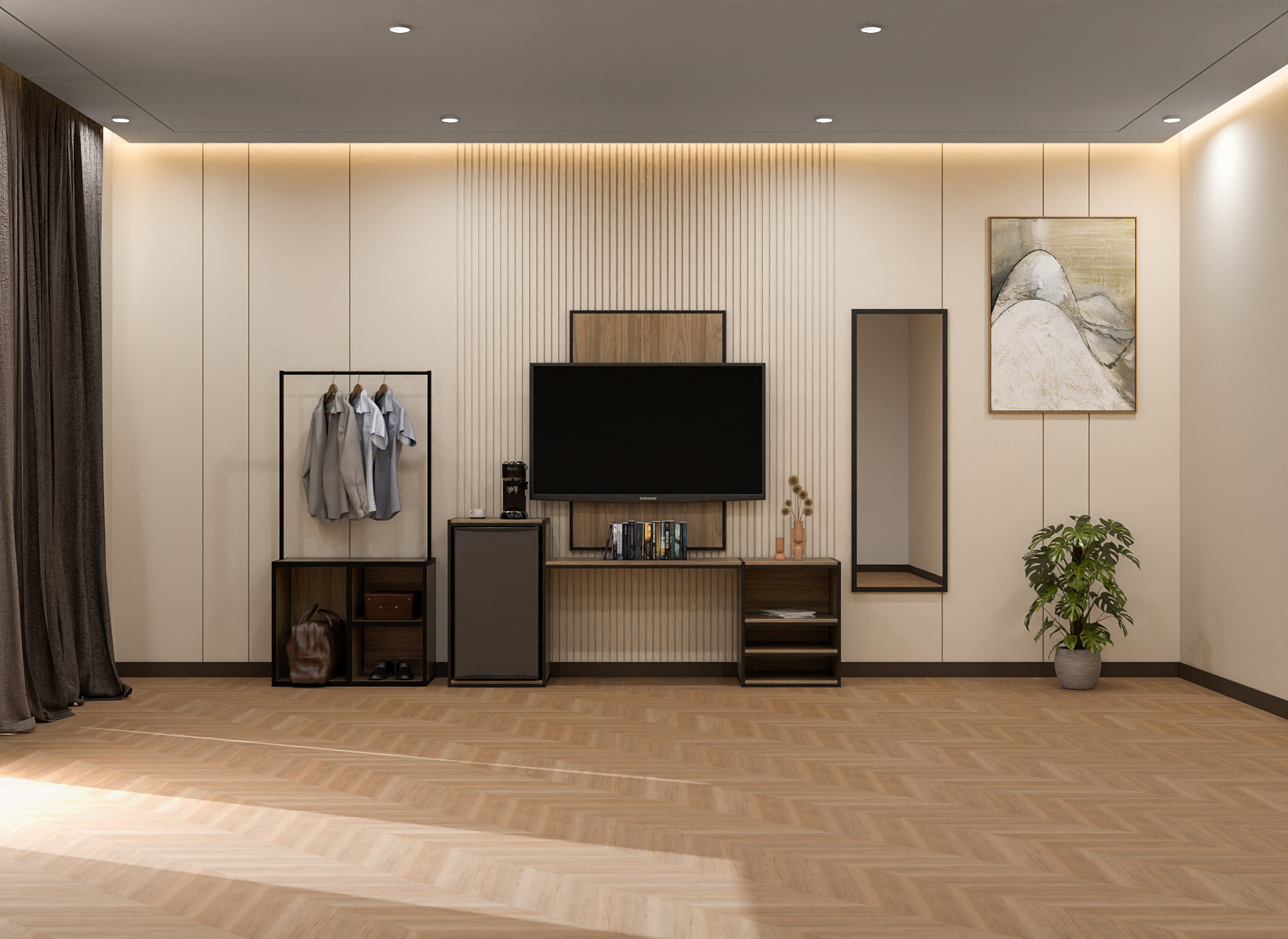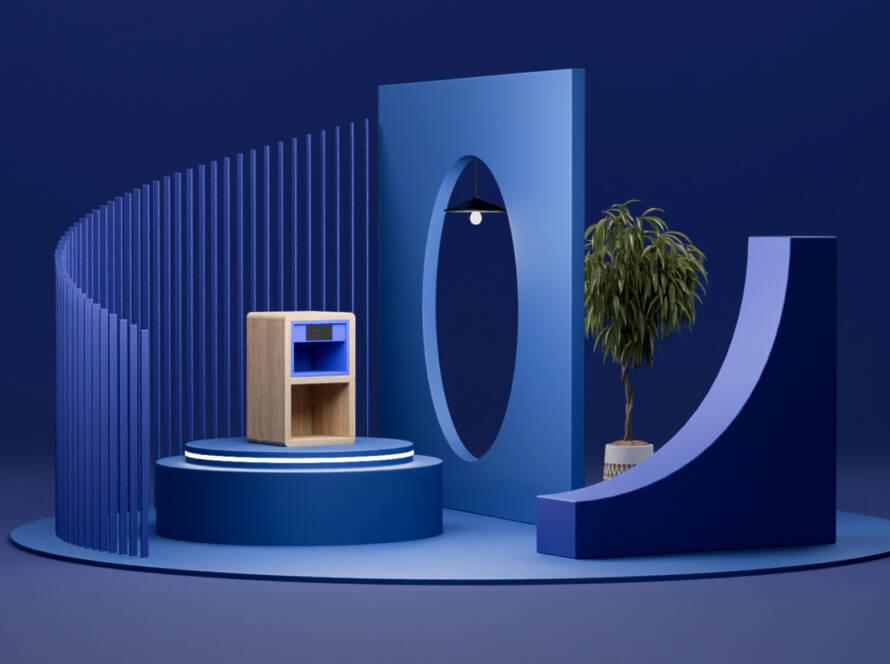
When someone walks into a hotel room, the first thing that strikes them is the overall ambiance. Other than the decor, lighting, and space, it is the furniture that shapes the customer experience. The most essential components amongst hotel furniture are the case goods. These items blend functionality with aesthetic appeal, ensuring a cohesive look while meeting guests’ practical needs.
We will try and explore the importance, features, and considerations involved in choosing the right case goods for a hotel. Before we dive-in headlong into the whats and whatnots, let us start by understanding what are case goods.
01. What are ‘Hotel CaseGoods’?
The term ‘case goods’ refers to furniture made primarily from hard materials like wood, laminate, metal, or a combination of these. In the context of hotels, they include pieces designed to offer storage and surface space, such as:
- Nightstands: Bedside piece, essential for holding lamps, phones, and personal items.
- Desks and Dressers: Functional pieces for guests to work or store clothing.
- Wardrobes/Closets: Vital for hanging clothes and storing larger items.
- Entertainment Units: Designed to house televisions, sound systems, and other electronics.
02. The importance of casegoods in hotels:
- Guest experience: Case goods significantly influence a guest’s impression of the room. High-quality, aesthetically pleasing furniture can enhance the room’s appeal and provide comfort. An outdated piece, however, can detract from an otherwise luxurious ambiance.
- Brand identity: Hotels often design their interiors to reflect their brand. Whether it’s a boutique hotel’s eclectic charm or a luxury chain’s modern minimalism, case goods must align with the overall theme. Custom designs allow hoteliers to create unique impressions and stand out in a competitive market.
- Durability & functionality: Hotels experience high footfall, and their furniture must withstand heavy use over time. Robust, durable case goods ensure longevity and reduce replacement costs, while functional designs enhance usability for guests.
03. Key considerations while choosing ‘case goods’
The materials used in case goods should strike a balance between durability, cost, and appearance. Common choices include:
- Solid Wood: Offers timeless appeal but may require more maintenance.
- Laminate: A budget-friendly option with high resistance to scratches and stains.
- Metal Accents: Often used for modern or industrial-style designs.
- Glass: Adds sophistication but requires frequent cleaning.
The design of the case goods should complement the room’s theme. Hotels catering to business travellers might opt for sleek, minimalistic desks, while resorts could feature rustic wardrobes with intricate detailing.
Many manufacturers offer customization to fit specific hotel needs. This can include adjusting dimensions, finishes, hardware, or even integrating technology like built-in charging ports and smart locks.
Practicality is as important as aesthetics. Thoughtful touches like soft-close drawers, ample storage, and ergonomic desk designs enhance the guest’s convenience and satisfaction.
While quality is paramount, cost remains a critical factor; hence, investing in durable, well-designed case goods can result in long-term savings by minimizing repair and replacement expenses.
Sustainability in hotel case goods
Sustainability is an increasingly important consideration for hoteliers and guests alike. Eco-conscious hotels are prioritizing case goods made from sustainable materials, such as FSC-certified wood, and those manufactured using environmentally friendly processes. Reclaimed or recycled materials also provide an eco-friendly alternative without compromising on style or durability.
Current Trends
The hospitality industry is a continuously evolving sector, and thus case goods are no exception. Some current trends include:
Integrated Technology
From nightstands with wireless charging pads to desks with cable management systems, tech-savvy furniture is in demand.
Combining wood, metal, and glass creates visually striking and contemporary pieces.
Space-saving furniture, such as ottomans with storage or desks that double as dining tables, caters to modern travellers’ needs.
Vibrant colors, textured laminates, and unique patterns are being used to create memorable spaces.
Based on the above we can safely conclude that hotel casegoods are more than just furniture—they’re integral to the guest experience and the hotel’s brand identity. Thoughtful selection of materials, design, and functionality ensures these pieces are not only visually appealing but, also practical and durable.


